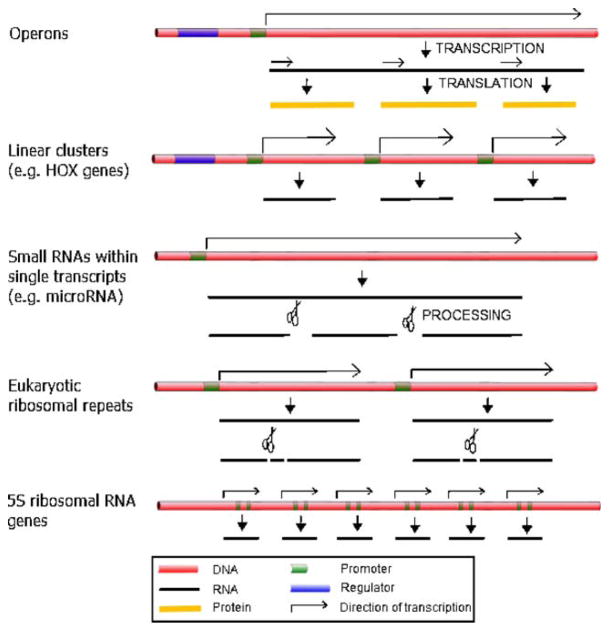Fig. 1.
Methods of linear gene organization. Eukaryotic cells have developed a variety of ways to arrange genetic information on the linear map to regulate gene expression. From top to bottom: Operons, which are transcribed as a single polycistronic transcript under control of an upstream operator; Linear clusters, such as the HOX genes, which are under control of a common regulator; Small RNAs, such as microRNAs, which are transcribed as a polycistronic unit and then processed into smaller RNAs; the Pol I-transcribed ribosomal repeats, transcribed in eukaryotes as a 35S transcript and then processed into 18S, 5.8S, and 28S rRNAs; and the small Pol III-transcribed 5S genes, which in most eukaryotes are present in tandemly repeated linear clusters

